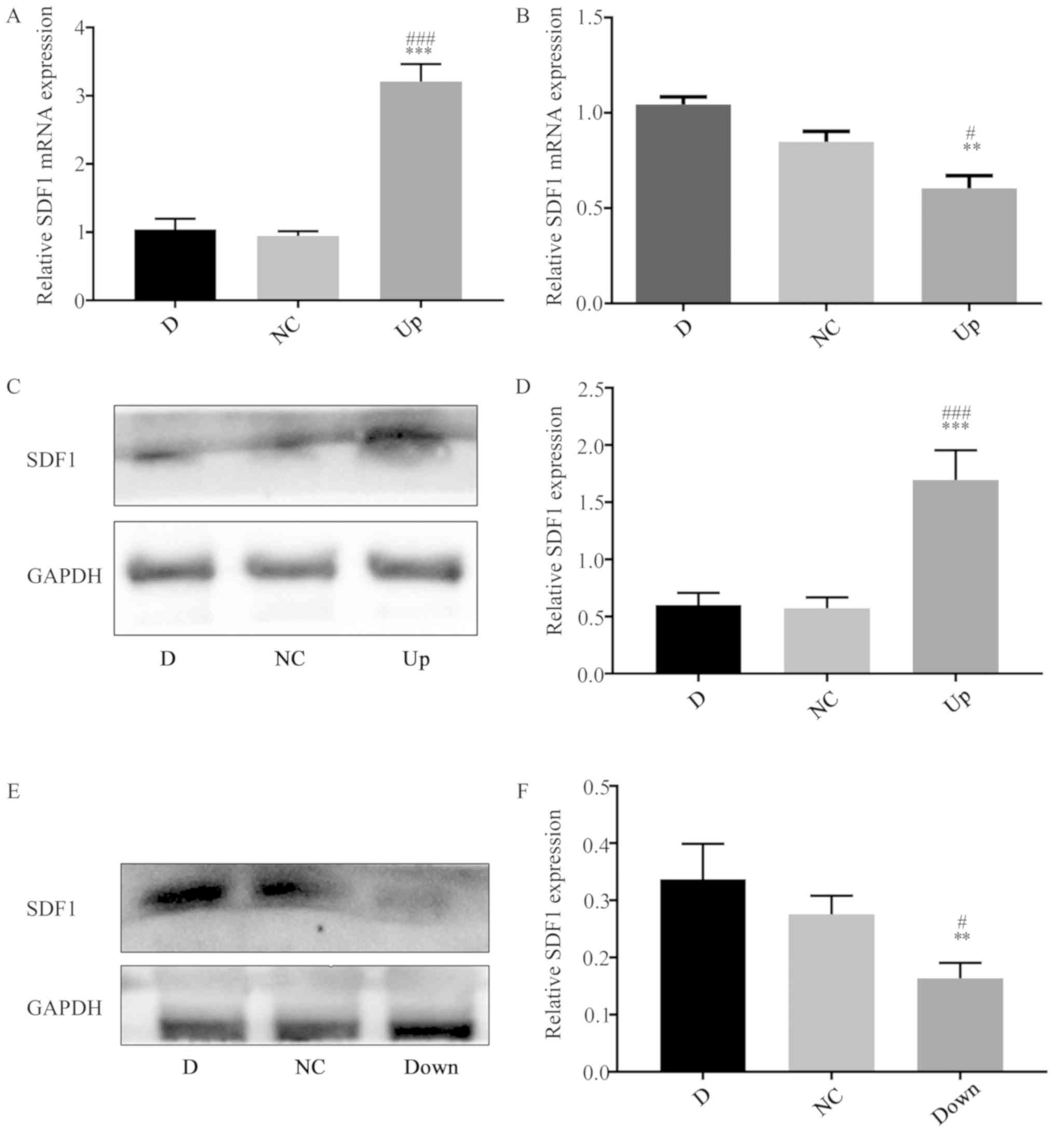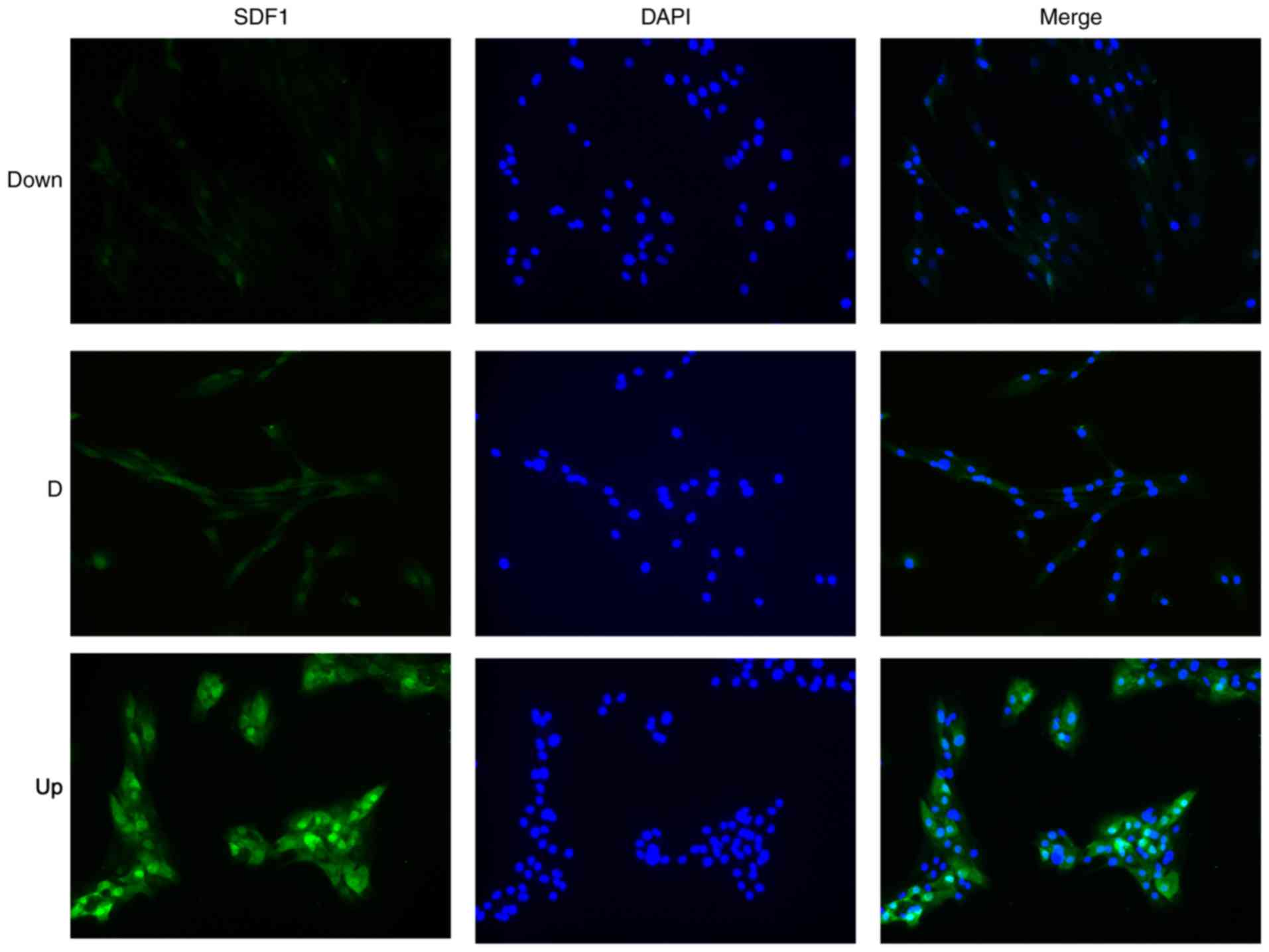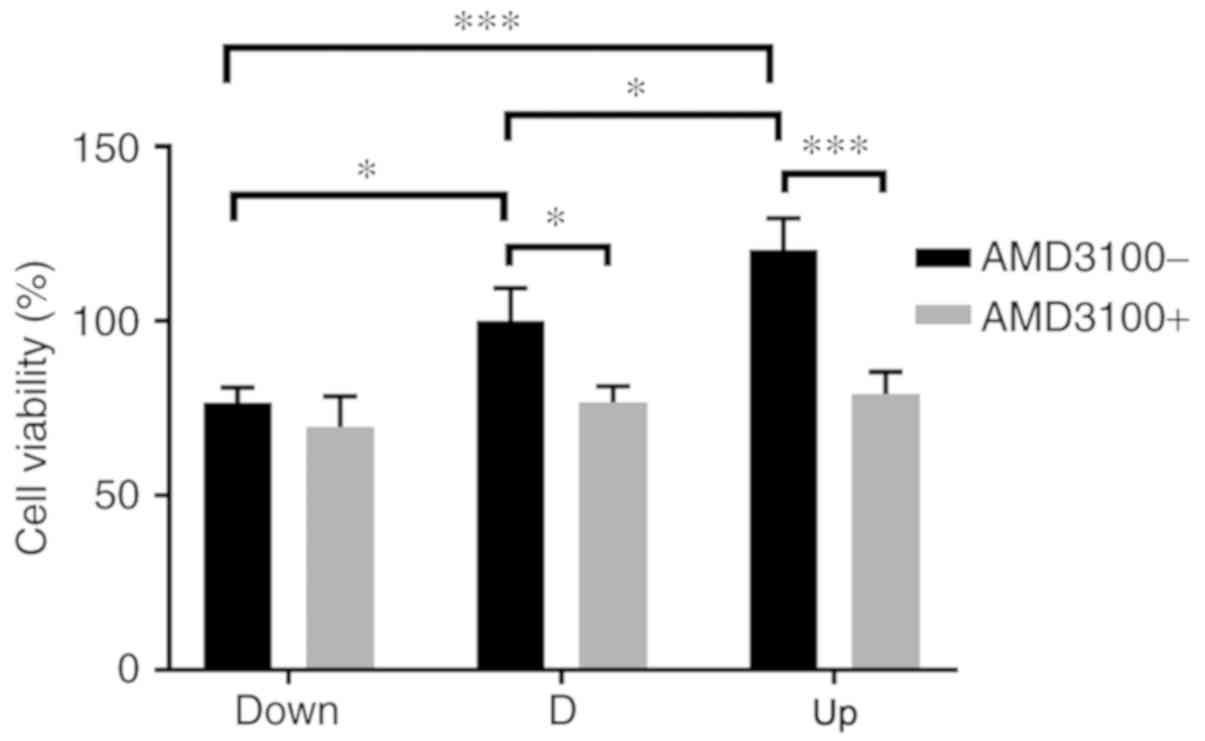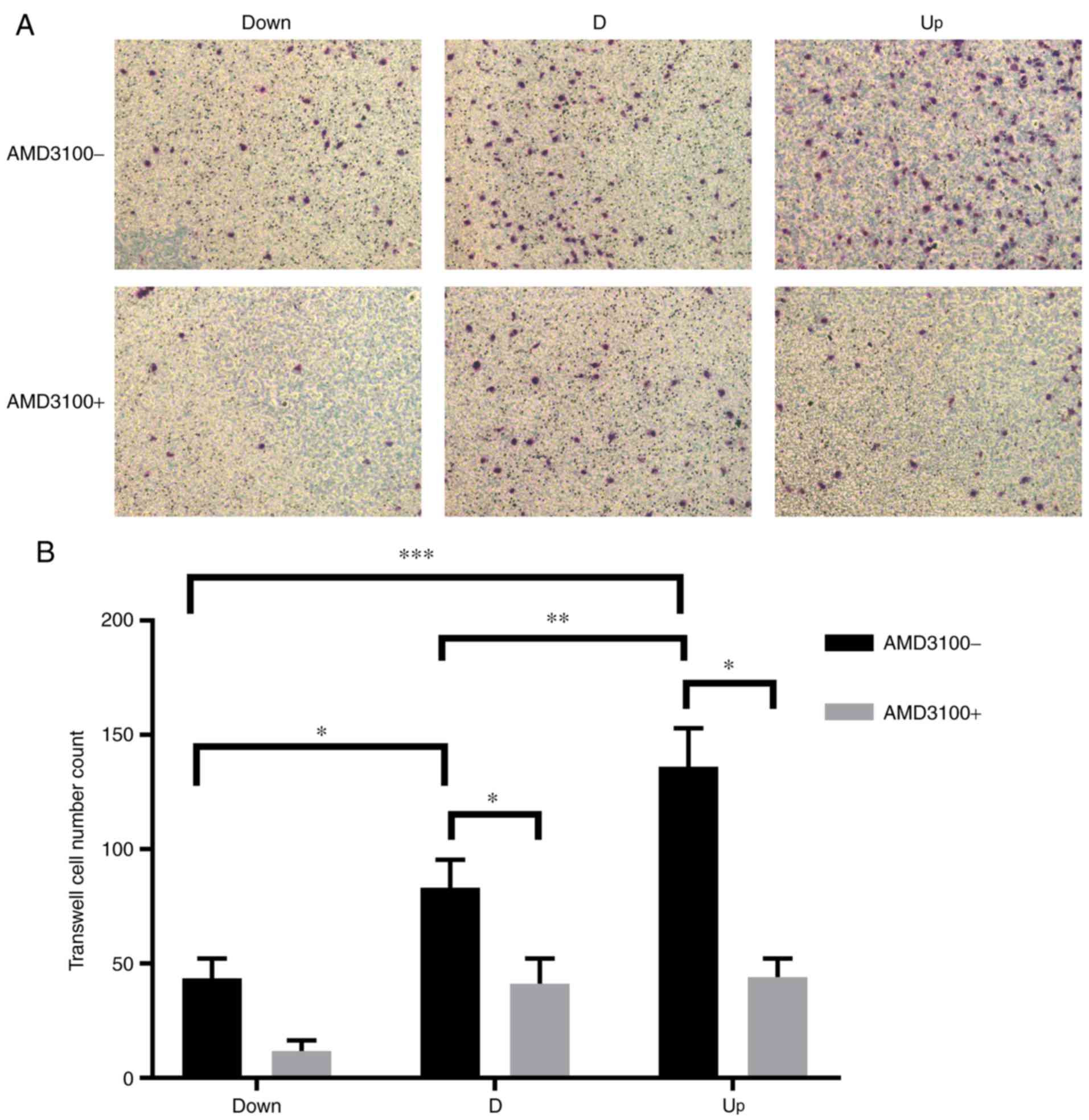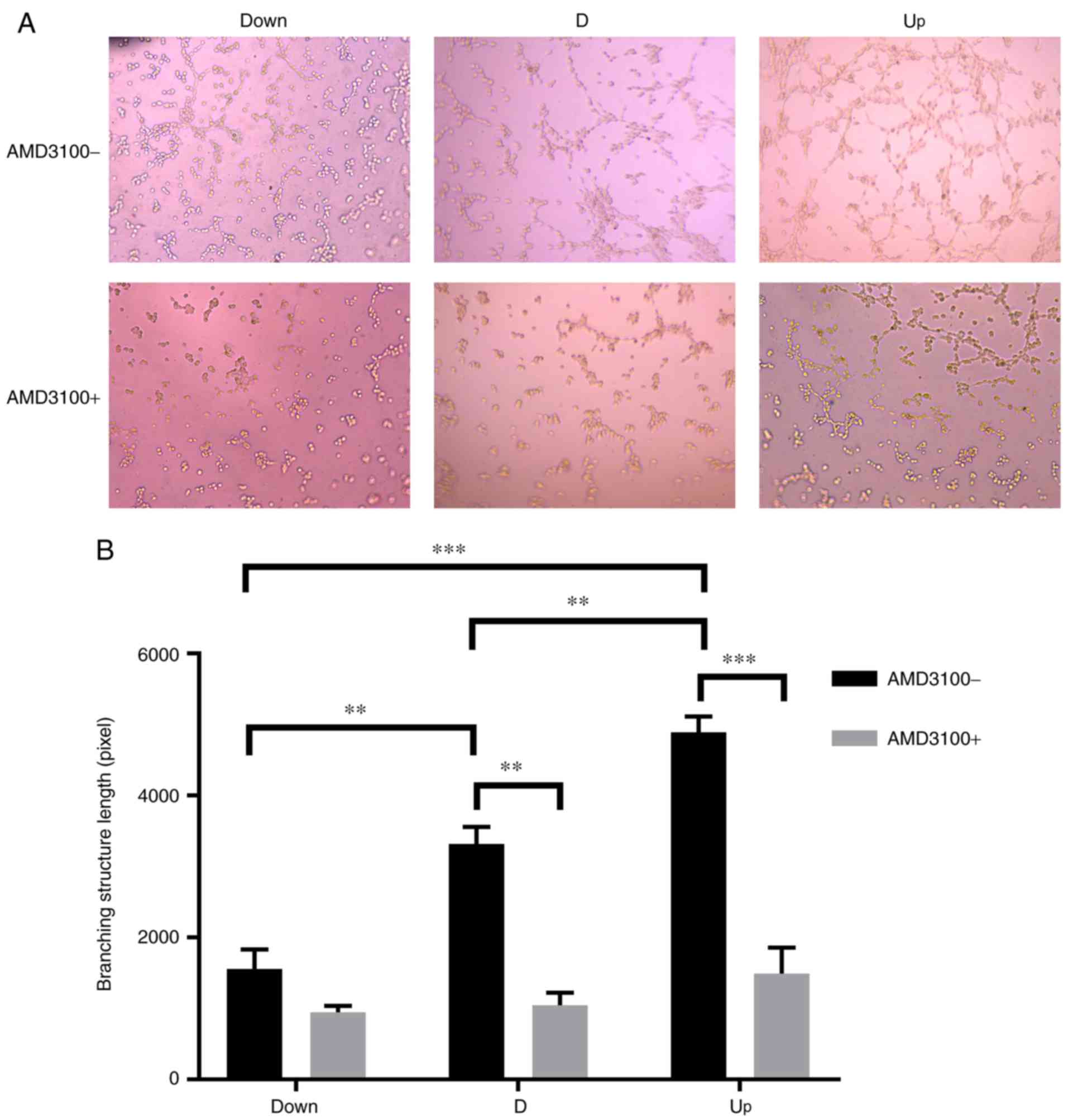|
1
|
Andersson GB: Epidemiological features of
chronic low-back pain. Lancet. 354:581–585. 1999. View Article : Google Scholar : PubMed/NCBI
|
|
2
|
Martin BI, Turner JA, Mirza SK, Lee MJ,
Comstock BA and Deyo RA: Trends in health care expenditures,
utilization, and health status among US adults with spine problems,
1997–2006. Spine (Phila Pa 1976). 34:2077–2084. 2009. View Article : Google Scholar : PubMed/NCBI
|
|
3
|
Dieleman JL, Baral R, Birger M, Bui AL,
Bulchis A, Chapin A, Hamavid H, Horst C, Johnson EK, Joseph J, et
al: US spending on personal health care and public health,
1996–2013. JAMA. 316:2627–2646. 2016. View Article : Google Scholar : PubMed/NCBI
|
|
4
|
O'Halloran DM and Pandit AS:
Tissue-engineering approach to regenerating the intervertebral
disc. Tissue Eng. 13:1927–1954. 2007. View Article : Google Scholar : PubMed/NCBI
|
|
5
|
Urban JP, Smith S and Fairbank JC:
Nutrition of the intervertebral disc. Spine (Phila Pa 1976).
29:2700–2709. 2004. View Article : Google Scholar : PubMed/NCBI
|
|
6
|
Matveeva N, Zivadinovik J, Zdravkovska M,
Jovevska S and Bojadzieva B: Histological composition of lumbar
disc herniations related to the type of herniation and to the age.
Bratisl Lek Listy. 113:712–717. 2012.PubMed/NCBI
|
|
7
|
Ahmed M, Bjurholm A, Kreicbergs A and
Schuftzberg A: Neuropeptide Y, tyrosine hydroxylase and vasoactive
intestinal polypeptide-immunoreactive nerve fibers in the vertebral
bodies, discs, dura mater and spinal ligaments of the rat lumbar
spine. Spine (Phila Pa 1976). 18:268–273. 1993. View Article : Google Scholar : PubMed/NCBI
|
|
8
|
Stefanakis M, Al-Abbasi M, Harding I,
Pollintine P, Dolan P, Tarlton J and Adams MA: Annulus fissures are
mechanically and chemically conducive to the ingrowth of nerves and
blood vessels. Spine (Phila Pa 1976). 37:1883–1891. 2012.
View Article : Google Scholar : PubMed/NCBI
|
|
9
|
Freemont AJ, Watkins A, Le Maitre C, Baird
P, Jeziorska M, Knight MT, Ross ER, O'Brien JP and Hoyland JA:
Nerve growth factor expression and innervation of the painful
intervertebral disc. J Pathol. 197:286–292. 2002. View Article : Google Scholar : PubMed/NCBI
|
|
10
|
Rätsep T, Minajeva A and Asser T:
Relationship between neovascularization and degenerative changes in
herniated lumbar intervertebral discs. Eur Spine J. 22:2474–2480.
2013. View Article : Google Scholar : PubMed/NCBI
|
|
11
|
Nagasawa T, Kikutani H and Kishimoto T:
Molecular cloning and structure of a pre-B-cell growth-stimulating
factor. Proc Natl Acad Sci USA. 91:2305–2309. 1994. View Article : Google Scholar : PubMed/NCBI
|
|
12
|
Loetscher M, Geiser T, O'Reilly T, Zwahlen
R, Baggiolini M and Moser B: Cloning of a human seven-transmembrane
domain receptor, LESTR, that is highly expressed in leukocytes. J
Biol Chem. 269:232–237. 1994.PubMed/NCBI
|
|
13
|
Zou YR, Kottmann AH, Kuroda M, Taniuchi I
and Littman DR: Function of the chemokine receptor CXCR4 in
haematopoiesis and in cerebellar development. Nature. 393:595–599.
1998. View Article : Google Scholar : PubMed/NCBI
|
|
14
|
Moser B and Loetscher P: Lymphocyte
traffic control by chemokines. Nat Immunol. 2:123–128. 2001.
View Article : Google Scholar : PubMed/NCBI
|
|
15
|
Katsumoto K and Kume S: The role of
CXCL12-CXCR4 signaling pathway in pancreatic development.
Theranostics. 3:11–17. 2013. View Article : Google Scholar : PubMed/NCBI
|
|
16
|
Sainz J and Sata M: CXCR4, a key modulator
of vascular progenitor cells. Arterioscler Thromb Vasc Biol.
27:263–265. 2007. View Article : Google Scholar : PubMed/NCBI
|
|
17
|
Sasaki T, Fukazawa R, Ogawa S, Kanno S,
Nitta T, Ochi M and Shimizu K: Stromal cell-derived factor-1alpha
improves infarcted heart function through angiogenesis in mice.
Pediatr Int. 49:966–971. 2007. View Article : Google Scholar : PubMed/NCBI
|
|
18
|
Shyu WC, Lin SZ, Yen PS, Su CY, Chen DC,
Wang HJ and Li H: Stromal cell-derived factor-1 alpha promotes
neuroprotection, angiogenesis, and mobilization/homing of bone
marrow-derived cells in stroke rats. J Pharmacol Exp Ther.
324:834–849. 2008. View Article : Google Scholar : PubMed/NCBI
|
|
19
|
Pfirrmann CW, Metzdorf A, Zanetti M,
Hodler J and Boos N: Magnetic resonance classification of lumbar
intervertebral disc degeneration. Spine (Phila Pa 1976).
26:1873–1878. 2001. View Article : Google Scholar : PubMed/NCBI
|
|
20
|
Livak KJ and Schmittgen TD: Analysis of
relative gene expression data using real-time quantitative PCR and
the 2(-Delta Delta C(T)) method. Methods. 25:402–408. 2001.
View Article : Google Scholar : PubMed/NCBI
|
|
21
|
Kwon WK, Moon HJ, Kwon TH, Park YK and Kim
JH: Influence of rabbit notochordal cells on symptomatic
intervertebral disc degeneration: Anti-angiogenic capacity on human
endothelial cell proliferation under hypoxia. Osteoarthritis
Cartilage. 25:1738–1746. 2017. View Article : Google Scholar : PubMed/NCBI
|
|
22
|
Vernon-Roberts B, Moore RJ and Fraser RD:
The natural history of age-related disc degeneration: The pathology
and sequelae of tears. Spine (Phila Pa 1976). 32:2797–2804. 2007.
View Article : Google Scholar : PubMed/NCBI
|
|
23
|
Jaerve A, Schira J and Müller HW: Concise
review: The potential of stromal cell-derived factor 1 and its
receptors to promote stem cell functions in spinal cord repair.
Stem Cells Transl Med. 1:732–739. 2012. View Article : Google Scholar : PubMed/NCBI
|
|
24
|
Dong F, Harvey J, Finan A, Weber K,
Agarwal U and Penn MS: Myocardial CXCR4 expression is required for
mesenchymal stem cell mediated repair following acute myocardial
infarction. Circulation. 126:314–324. 2012. View Article : Google Scholar : PubMed/NCBI
|
|
25
|
Lu W, Shi J, Zhang J, Lv Z, Guo F, Huang
H, Zhu W and Chen A: CXCL12/CXCR4 axis regulates aggrecanase
activation and cartilage degradation in a post-traumatic
osteoarthritis rat model. Int J Mol Sci. 17(pii): E15222016.
View Article : Google Scholar : PubMed/NCBI
|
|
26
|
Zhang H, Zhang L, Chen L, Li W, Li F and
Chen Q: Stromal cell-derived factor-1 and its receptor CXCR4 are
upregulated expression in degenerated intervertebral discs. Int J
Med Sci. 11:240–245. 2014. View Article : Google Scholar : PubMed/NCBI
|
|
27
|
Liu Z, Ma C, Shen J, Wang D, Hao J and Hu
Z: SDF-1/CXCR4 axis induces apoptosis of human degenerative nucleus
pulposus cells via the NF-κB pathway. Mol Med Rep. 14:783–789.
2016. View Article : Google Scholar : PubMed/NCBI
|
|
28
|
Johnson WE, Caterson B, Eisenstein SM and
Roberts S: Human intervertebral disc aggrecan inhibits endothelial
cell adhesion and cell migration in vitro. Spine (Phila Pa 1976).
30:1139–1147. 2005. View Article : Google Scholar : PubMed/NCBI
|
|
29
|
Peng B, Chen J, Kuang Z, Li D, Pang X and
Zhang X: Expression and role of connective tissue growth factor in
painful disc fibrosis and degeneration. Spine (Phila Pa 1976).
34:E178–E182. 2009. View Article : Google Scholar : PubMed/NCBI
|
|
30
|
Cai Y, Li X, Wang YS, Shi YY, Ye Z, Yang
GD, Dou GR, Hou HY, Yang N, Cao XR and Lu ZF: Hyperglycemia
promotes vasculogenesis in choroidal neovascularization in diabetic
mice by stimulating VEGF and SDF-1 expression in retinal pigment
epithelial cells. Exp Eye Res. 123:87–96. 2014. View Article : Google Scholar : PubMed/NCBI
|
|
31
|
Yu P, Ge YZ, Zhao Y, Wu JP, Wu R, Zhou LH
and Jia RP: Identification and significance of mobilized
endothelial progenitor cells in tumor neovascularization of renal
cell carcinoma. Tumour Biol. 35:9331–9341. 2014. View Article : Google Scholar : PubMed/NCBI
|
|
32
|
Virgintino D, Errede M, Rizzi M, Girolamo
F, Strippoli M, Wälchli T, Robertson D, Frei K and Roncali L: The
CXCL12/CXCR4/CXCR7 ligand-receptor system regulates
neuro-glio-vascular interactions and vessel growth during human
brain development. J Inherit Metab Dis. 36:455–566. 2013.
View Article : Google Scholar : PubMed/NCBI
|
|
33
|
Arnaoutova I and Kleinman HK: In vitro
angiogenesis: Endothelial cell tube formation on gelled basement
membrane extract. Nat Protoc. 5:628–635. 2010. View Article : Google Scholar : PubMed/NCBI
|
|
34
|
Debnath B, Xu SL, Grande F, Garofalo A and
Neamati N: Small molecule inhibitors of CXCR4. Theranostics.
3:47–75. 2013. View Article : Google Scholar : PubMed/NCBI
|
|
35
|
Gupta SK, Lysko PG, Pillarisetti K,
Ohlstein E and Stadel JM: Chemokine receptors in human endothelial
cells. Functional expression of CXCR4 and its transcriptional
regulation by inflammatory cytokines. J Biol Chem. 273:4282–4287.
1998. View Article : Google Scholar : PubMed/NCBI
|
|
36
|
Yang W, Yu XH, Wang C, He WS, Zhang SJ,
Yan YG, Zhang J, Xiang YX and Wang WJ: Interleukin-1β in
intervertebral disk degeneration. Clin Chim Acta. 450:262–272.
2015. View Article : Google Scholar : PubMed/NCBI
|
















